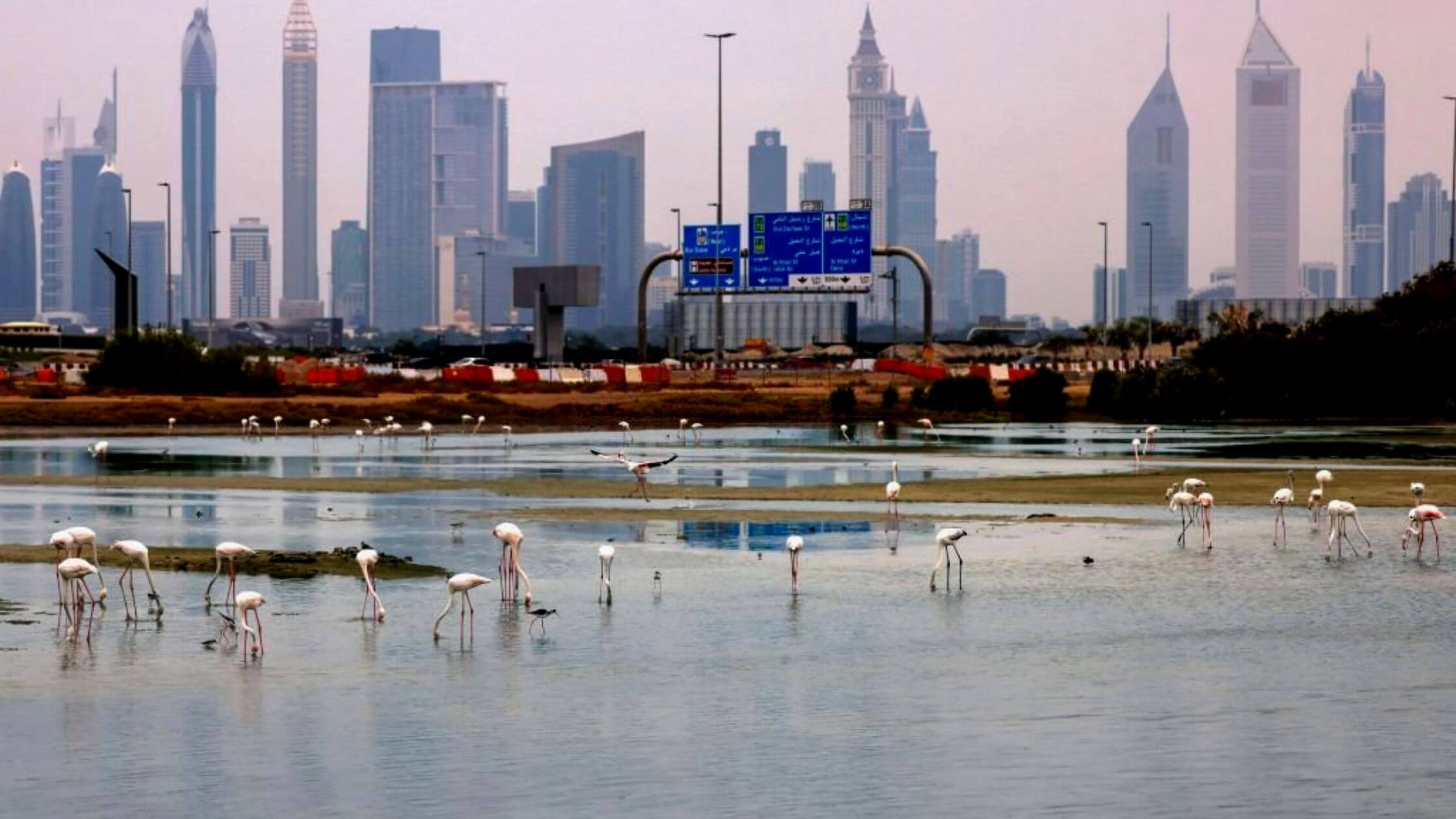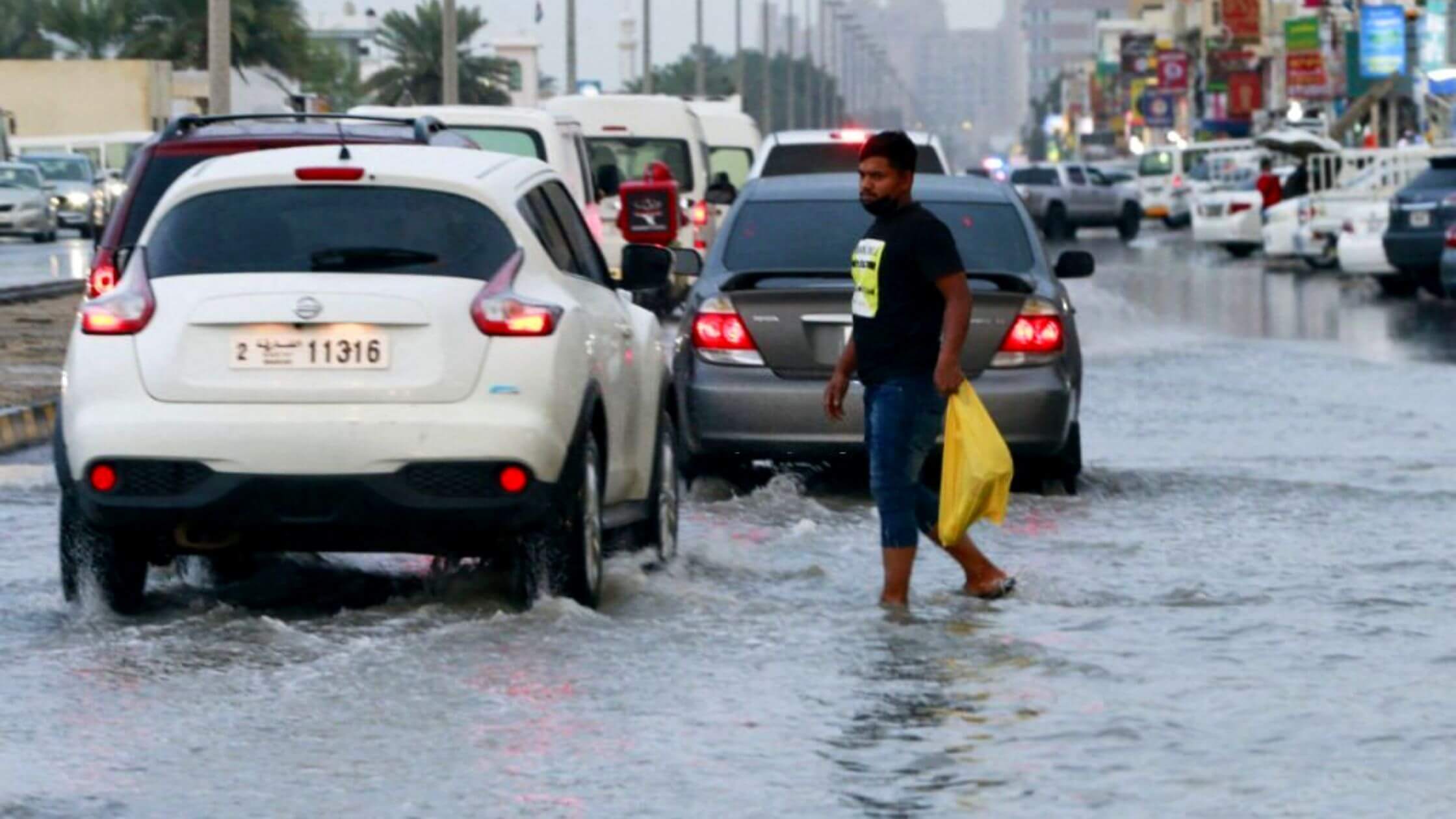News
UAE Rains: The Country’s Weather Remains Unstable As Clouds Are Forming

According to the National Center of Meteorology (NCM), unpredictable weather will continue in the UAE in the coming days. There will be rainfall in different areas and the intensity of the rains can also vary according to different locations.
Days will be partly cloudy to cloudy and the authorities have issued a rainfall warning. There was moderate to heavy rainfall on Monday and in some areas, it was accompanied by thunder and lightning.
The weather department said that there has been a shift in the recent weather patterns of the Emirate nation as there seems to be an extension of a low-pressure surface system from the southwest working together with an upper air low pressure and a jet stream from the west.
Clouds Form All Over The UAE As The Weather Remains Unstable
The Dubai municipality has already taken the necessary measures to face the unstable weather in the UAE. The NCM has reported rains in multiple places like Al Barsha and Jebel Ali. Residents across the UAE have reported rains and showers in other areas as well.

Some of them are even ecstatic to receive rain as it makes them feel peaceful and calm. It makes them want to visit the beach as they believe this is the perfect weather. The Mamzar beach saw some of the people enjoying its cold breeze sipping Karak and others just relaxing on the beach bay. Residents of Al Quoz, Karama, and Dubai Marina also reported light showers in the area.
The NCM observed that the unstable climate can go on till Wednesday and to take the necessary precautions by staying away from areas prone to flash floods and rainwater accumulation.
The Abu Dhabi police, on their social media, have alerted motorists to drive carefully during the rain and to keep ample distance between vehicles to avoid any sudden skiddings or collisions. They have released six tips that motorists can follow for safe driving.
- Drive at a lesser speed as the roads can be slippery because of rain.
- Avoid using high beam lights while driving as this can make the viewing of the opposite driver difficult especially when it’s raining.
- Try to take routes that won’t be affected by floods.
- The safety distance between vehicles should be maintained at double the usual so that sudden brakes wouldn’t cause collisions.
- Drivers should always make sure that the vehicle is properly ventilated.
- Do not use your mobile phone while driving as this can prove to be a distraction.
Fresh winds that blow dust are predicted to start from Monday through Tuesday reaching speeds of 40 kmph. According to the weather department, the temperatures can go down to eighteen-degree celsius in Abu Dhabi and Dubai. It can also go as low as ten-degree celsius in mountainous regions.
Humidity levels are also expected to sway between thirty-five to eighty-five percent in the regions of Abu Dhabi and Dubai with moderate weather in the sea. The sea of Oman can face some disturbances in the coming days. The NCM has released a yellow warning from yesterday following the clouds seen from the western part.
Related Topics:
🔹UAE Cyber Security Council Warns Against Cyber Attacks During New Year Celebrations
🔹UAE: Man Dies After Losing Control Of Vehicle, Crashing Into Mountain
The Sharjah Municipality has also informed us that they are fully prepared to face the rains this winter. It has provided the necessary equipment like dam pumps, mobile withdrawal stations, and tanks for efficiently removing water accumulated in various regions.
The pre-rain preparations have been initiated by the municipality officials and they are working around the clock to complete the designated tasks. The immediate goal is to set up conditions that can improve the traffic, protect public property and create a roadmap to deal with water in certain flood-prone areas.
UAE has a long history of flash floods as incessant rains would cause the drainages and roads to get clogged fast. In the month of July this year, around 870 people were rescued by the emergency team following a flash flood that affected the UAE’s Northern Emirates.
This year’s July month was reported to receive the most rain among the July months of the last thirty years. A total of 3,897 people were shifted to a temporary shelter in Fujairah and Sharjah during this time. Seven Asian migrants died in this flash flood and Five among them were Pakistani citizens.
An Arab urban designer and planner who is now based in the UK said that the main problem with the administration is that they are not looking into any resilience plans that can prepare the city spaces to better tackle the issue of flooding. Rather they are keener to compensate for the damages as there are a lot of funds available.
Other Gulf countries like Bahrain, Kuwait, Oman, Saudi Arabia, and Qatar also face flash floods. Gulf countries need to have better drainage management, limited infrastructure construction in flood-prone areas and also promote landscape restorations which can help deal with the issue of flash floods in the region.